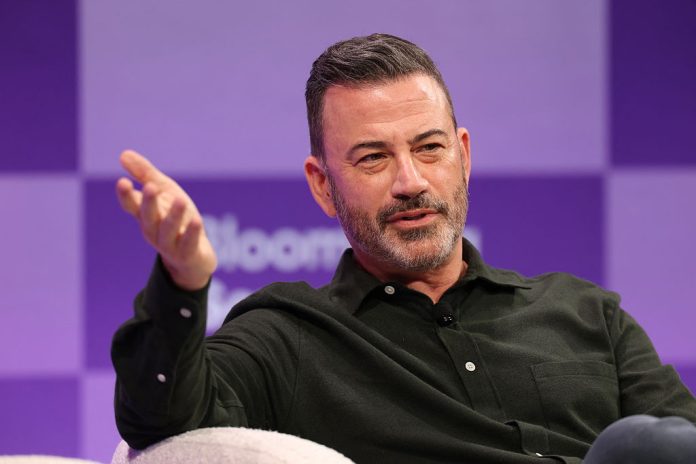Conan O’Brien sounded a little wistful when he reflected on the slow decline of late-night talk shows seven years ago. The long-standing formula of a nightly monologue followed by a carousel of guests on the promotional circuit “doesn’t make sense anymore,” he said at the time. Since then, the evidence has only piled up, as audiences increasingly consume comedy in short bursts on their phones.
In recent years, the major network late-night shows—Jimmy Kimmel Live!, The Late Show with Stephen Colbert, The Tonight Show Starring Jimmy Fallon, and Late Night with Seth Meyers—have all suffered steep viewership declines. Nielsen data shows Colbert’s Late Show, which will end in May 2026, has lost one million viewers over the past eight years—a 26 percent drop. During the same period, audiences for Kimmel, Fallon and Meyers fell from 2.3 million to 1.8 million; 2.8 million to 1.2 million; and 1.4 million to 923,000, respectively, and ad revenue nearly halved even as production costs have soared, according to media analytics firm Guideline.
Most of the major network shows began uploading clips to YouTube in the early 2010s, as networks recognized how the platform was increasingly driving younger viewership and next-day buzz. Jimmy Kimmel said he loves YouTube and the wider reach it gives his show, but it has hurt ratings and comes with an economic problem. “I’m very conscious of the fact that ABC pays for the show and YouTube pays nothing, and YouTube gets to sell it, and keeps half the money—that’s quite a deal for them, it really is,” Kimmel said at the Bloomberg Screentime conference earlier this month.
Late-night shows used to be “a way to get high-priced talent for almost free,” Kimmel added. But with annual costs topping $100 million, he sees the model as unsustainable. “Somebody will figure it out,” he said, pointing to Hot Ones—a YouTube interview series where guests answer questions while eating spicy wings—as proof that similar concepts can thrive at a fraction of the cost. “You could still have the same format for a lot less—the host won’t make as much, the audience won’t be as big, but that’s okay,” he said.
Last month, ABC briefly suspended Kimmel’s show after a monologue that included remarks about slain conservative activist Charlie Kirk. The controversy, which sparked outrage on the right, underscored how tightly network hosts remain bound by advertisers and FCC oversight.
Late-night’s traditional functions have scattered across the internet today: news commentary thrives on X; sketch comedy dominates TikTok; and celebrity interviews have migrated to podcasts. The format, as Washington Post columnist Megan McArdle put it after Colbert’s cancellation, is “built for a media world that no longer exists.”
More precisely, it’s not just late-night that’s fading—it’s the cultural middle that sustained it. “In comedy, as in much of our culture, the age of institutions is giving way to an age of individuals talking to individuals,” Atlantic writer Derek Thompson said on a July episode of his Plain English podcast.
Nowhere is that shift clearer than in the success of Fox News’ Gutfeld!. Hosted by Greg Gutfeld, the show’s mix of partisan punchlines, culture-war riffs and nightly takedowns of liberal targets draws about 2.9 million viewers—regularly beating the major network shows.
Recent episodes have seen Gutfeld mock figures like Vice President Kamala Harris and Illinois Gov. J.B. Pritzker, as well as late-night peers Colbert and Kimmel. In an August episode, he put it more bluntly: “For years, the left owned the culture. They told us what was funny and what was offensive … The grown-ups are back in charge of the party, and we’re turning the music up louder than ever.”
Seen in that light, Netflix’s recent deal with Spotify to bring several popular podcasts—including The Bill Simmons Podcast, The Rewatchables and The Dave Chang Show—to the streaming platform in video form reflects the same shift. Where a single late-night appearance once captured the national spotlight, influence today flows through niche fandoms, podcasts and ideological entertainment ecosystems.


